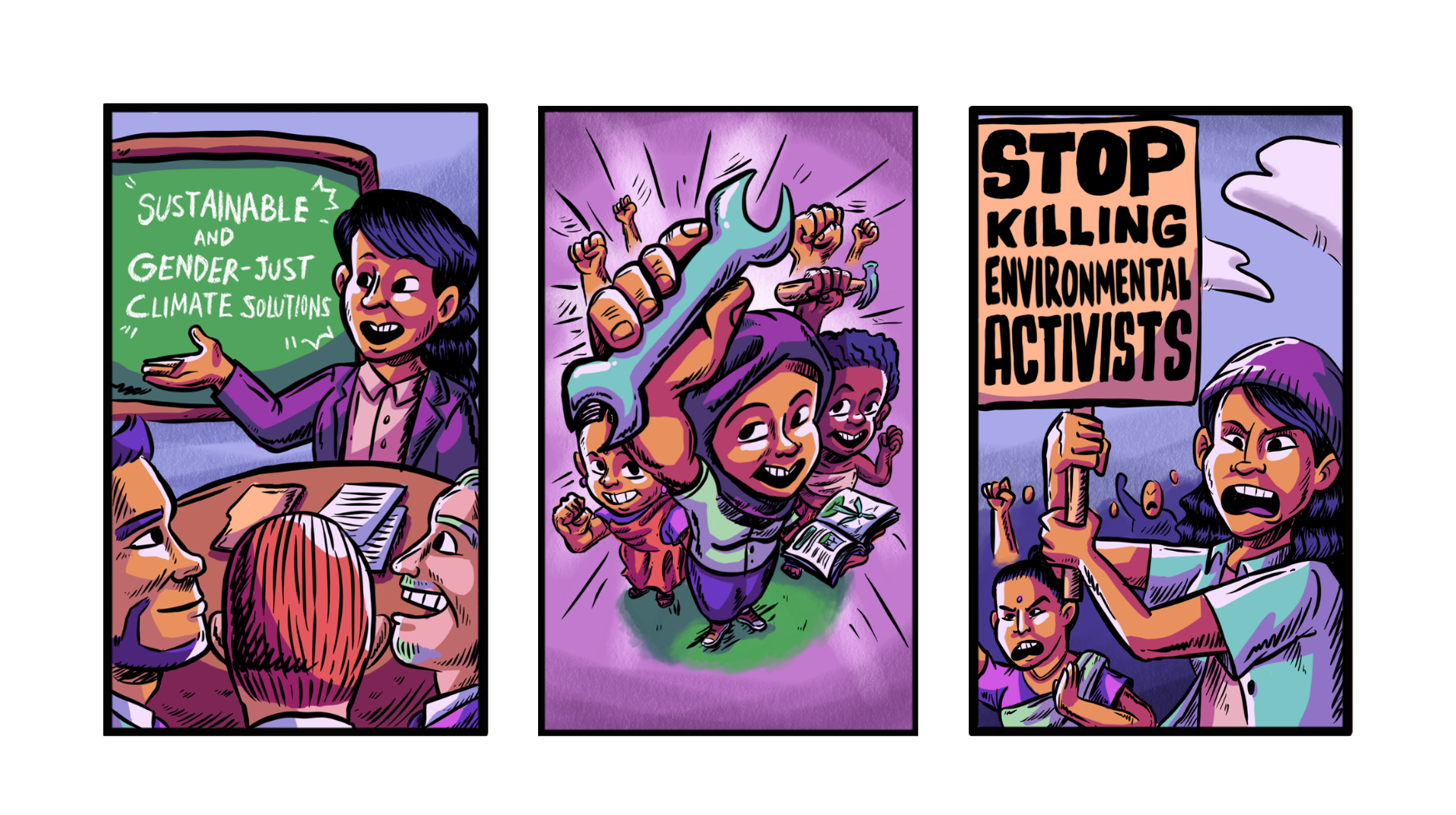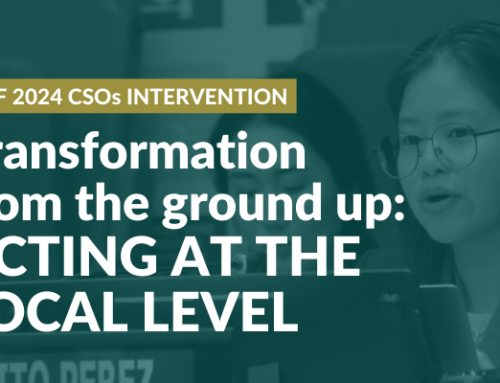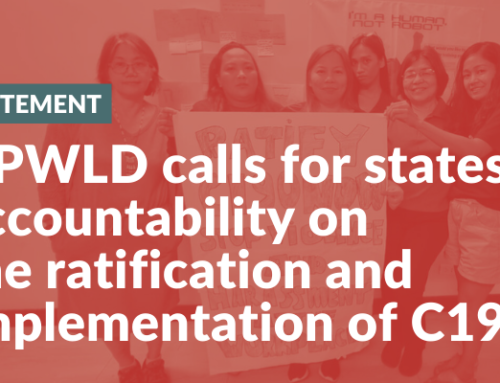Written by Patricia Miranda Wattimena, Climate Justice Programme Officer, Asia Pacific Forum on Women, Law and Development

As we celebrate the International Women’s Day and honour women’s collective struggles for system change, the Climate Justice team takes this opportunity to launch our feminist analysis on four critical issues, namely loss and damage, adaptation and mitigation, false solutions and climate financing. Analysis of these thematic issues is presented through illustrations available in English, Bahasa Indonesia and Nepali.
Feminist analysis in these illustrations emerged from a series of South to South Feminist Learning on Climate Justice (SSFL), where grassroots women across Asia and the Pacific gathered and shared their lived realities. This is a response to the global climate discourse that has been notoriously facilitating corporate capture instead of responding to the peoples’ priorities and bringing a meaningful, structural change to the worsening situation facing women and grassroots communities in the region caused by the global inaction for climate justice.
Women have testified that the legacy of colonialism and centuries of subjugations significantly affected their capacity to adapt to climate crises. Finance flow for adaptation remains remarkably insufficient to help communities adjust to the impacts of climate change. As illustrated, between 2015 – 2019, only 8 per cent of the overall climate finance went towards adaptation efforts. At the same time, we so often see how financing for climate mitigation is used to fund corporate-driven false solutions including ‘renewable’, ‘clean’, ‘smart’, and ‘low carbon’ energy projects. For instance, as of August 2022, 83.5 per cent out of the 7,885 Clean Development Mechanism (CDM) projects globally are implemented in Asia and the Pacific in the form of large-scale mitigation projects including solar, biomass and hydropower1. Through their lived realities, grassroots women and their communities have documented and continue to tell the stories about how these projects are harming their communities, violating human rights and threatening their survival; all implemented in the name of tackling climate crises.
Equally critical is the reality of loss and damage for women in Asia and the Pacific as the impacts do not only affect their already severe economic conditions. More fundamentally, women face non-economic losses such as loss of cultures, forced displacement, loss of lives and biodiversity, and violations of their human rights to name a few. Loss and damage finance arrangements agreed after more than 30 years of negotiations are a stepping stone, although many questions still remain on how they are implemented to truly respond to the needs of the grassroots communities. This includes addressing the non-economic impacts instead of only focusing on the market-driven economic aspect of loss and damage.
Contributing to more than 90 per cent of the global carbon emissions2, the Global North countries must provide adequate climate finance flow to pay for their centuries long climate debt. However, even the arbitrary and inadequate political commitment of USD 100 billion annually sealed in Copenhagen in 2009, remains a broken promise of the developed countries until this very day.
The loss and damage finance arrangements along with the process to set a New Collective Quantified Goal on Climate Finance (NCQG) must put the realities of women and communities vulnerable to climate crisis as a basis to determine the goal. For instance, rural families in Bangladesh alone have to spend at least USD 2 billion a year to address climate crises3, and more than 50 poor countries are on the brink of bankruptcy4 as they are struggling with loans to address climate crises. Feminist and grassroots women’s movements have been consistent with their demands that climate finance flow must be new and additional, come from public sources in the form of grants instead of loans, and be directly accessible to women and their communities.
Despite the worsening climate crises, we are witnessing unprecedented increase of the representation of the fossil fuel industry in climate negotiation spaces. COP27 was a platform for 636 lobbyists from the oil and gas industries bringing in their exploitative and market-driven agenda. It was a 25 per cent increase from a total of 503 lobbyists attending the COP26 in Glasgow5. Along with the domination, comes not only the rapidly integrated false solutions into the outcomes of these global negotiations but also the increasing resistance from feminists and climate justice movements across the globe. Earlier this year, more than 1,500 civil society groups have opposed the appointment of Abu Dhabi oil tycoon, Sultan Al Jaber, as the president of COP28 in Dubai taking place towards the end of 20236.
The Intergovernmental Panel on Climate Change (IPCC) has testified that the emissions from fossil fuel industry activities are contributing to 89 per cent of the total global emissions and the world needs to do away with fossil fuel to limit the global temperature below 1.5 °C above pre-industrial levels. It is impossible to reverse the worsening impacts of climate crises without a deep and immediate cut of the global carbon emissions produced by rich countries and their corporations, particularly the fossil fuel industry. We need a swift, just and equitable phase out of fossil fuels.
Merging power of the polluters increases pressure on the feminist climate justice movements, but the collective struggles continue. The illustrations reflect women’s knowledge and understanding on the root causes of climate injustices. The feminist demands reflect women’s determination to address climate colonialism and worsening inequalities as the polluters continue to refuse to pay for their historical and present responsibilities for climate crises.
[1] Annual Report of the Executive Board of the Clean Development Mechanism to the Conference of the Parties Serving as the Meeting of the Parties to the Kyoto Protocol. 2022: https://unfccc.int/sites/default/files/resource/cmp2022_07E.pdf
[2] Quantifying national responsibility for climate breakdown: an equality-based attribution approach for carbon dioxide emissions in excess of the planetary boundary. The Lancet Planetary Health. 2020: https://www.sciencedirect.com/science/article/pii/S2542519620301960
[3] Bearing the climate burden: how households in Bangladesh are spending too much. International Institute for Environment and Development. 2019: https://www.iied.org/16643iied
[4] ‘More than 50 poor countries in danger of bankruptcy’ says UN official. The Guardian. 2022: https://www.theguardian.com/environment/2022/nov/10/54-poor-countries-in-danger-of-bankruptcy-amid-economic-climate-cop27
[5] ‘Explosion’ in number of fossil fuel lobbyists at COP27 climate summit. The Guardian. 2022: theguardian.com/environment/2022/nov/10/big-rise-in-number-of-fossil-fuel-lobbyists-at-cop27-climate-summit
[6] UAE sparks furious backlash by appointing Abu Dhabi oil chief as president of COP28 climate summit. CNBC. 2023: https://www.cnbc.com/2023/01/12/cop28-uae-sparks-backlash-by-appointing-oil-chief-as-president.html





